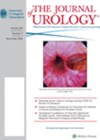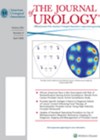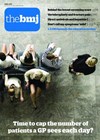
Journal Reviews
Homo digitalis during COVID-19?
The COVID-19 pandemic has affected all aspects of our lives. We have seen huge changes in the health service, medical practice and hospital working. Many urology meetings – national and international – were cancelled and seminars and courses have become...
Cardiac failure and medical therapy for LUTS / BPH
Alpha blockers (AB), 5-alpha reductase inhibitors (5-ARI) and combination therapy are widely prescribed for lower urinary tract symptoms (LUTS) considered consequent to prostatic enlargement and are the mainstay of first-line therapy. This retrospective interrogation of a large population-based dataset of...
Male LUTS: where do we stand?
Patients’ preferences and expectations depend on cultural, geographical, economic and national factors. Data from different countries should be interpreted with caution when applied to the individual patient. Patients rarely seek help for benign prostatic obstruction (BPO) unless urinary retention occurs,...
Urinary frequency and COVID-19: is there a missing link?
The current COVID pandemic has been a worldwide challenge for over a year. It can affect an individual in various ways. According to the World Health Organization, the classical signs are dry cough, fever and shortness of breath. In addition,...
Urinary diversion and infections
This article will be of interest to colleagues undertaking reconstructive surgery. Urinary diversions have been performed for decades. Common indications are muscle-invasive bladder cancer, neurological disorders, inflammatory conditions and congenital malformation. The diversions could be continent or non-continent. Complications due...
Vitamin D and LUTS
Lower urinary tract symptoms (LUTS) and vitamin D deficiency have been thought to be connected, but the association has been inconsistent. Vitamin D receptors have been identified in the bladder, prostate and pelvic floor muscles, and it has been linked...
Onabotulinum toxin A (BTX) not helpful for chronic scrotal pain
It is refreshing to read a report on negative outcomes as it reinforces the honesty that is often lacking with the well-known publication bias in medical publications. It is also not common to come across surgical randomised controlled trials (RCTs)...
Prostatic artery embolisation versus sham
Randomised trials with use of sham is uncommon in the surgical literature, which makes this paper more interesting. Many different treatments are available for treating lower urinary tract symptoms / benign prostatic hyperplasia (LUTS / BPH). Prostatic artery embolisation (PAE)...
Chronic retention – all you need to know
Chronic retention – all you need to know Chronic urinary retention is a common presentation in elderly and frail patients. Two types should be recognised - low pressure chronic retention (LPCR) and high pressure chronic retention (HPCR). Acute-on-chronic retention occurs...
Prostatic urethral lift for obstructive median lobes: 12-month results of the MedLift study
As the various new BPH therapies try and mark out their role in the management of the condition, this is an interesting and useful addition to the literature. Patients were clinically screened for an obstructive median lobe on cystoscopy, which...
Early complications following ambulatory hypospadias repair
Most hypospadias repairs are undertaken on a day case ambulatory basis. Roth et al. have studied clinically significant events occurring within 30 days of operation. Data was obtained from the Paediatric Health Information System (PHIS), an administrative database that contains...
Urinary tract infections and antibiotics – the debate goes on
A large number of hospital patients and primary care patients suffer from recurrent urinary tract infection (UTI) and urosepsis. Some of these patients end up in intensive care units with multi-organ failure. New draft guidance from the National Institute for...















